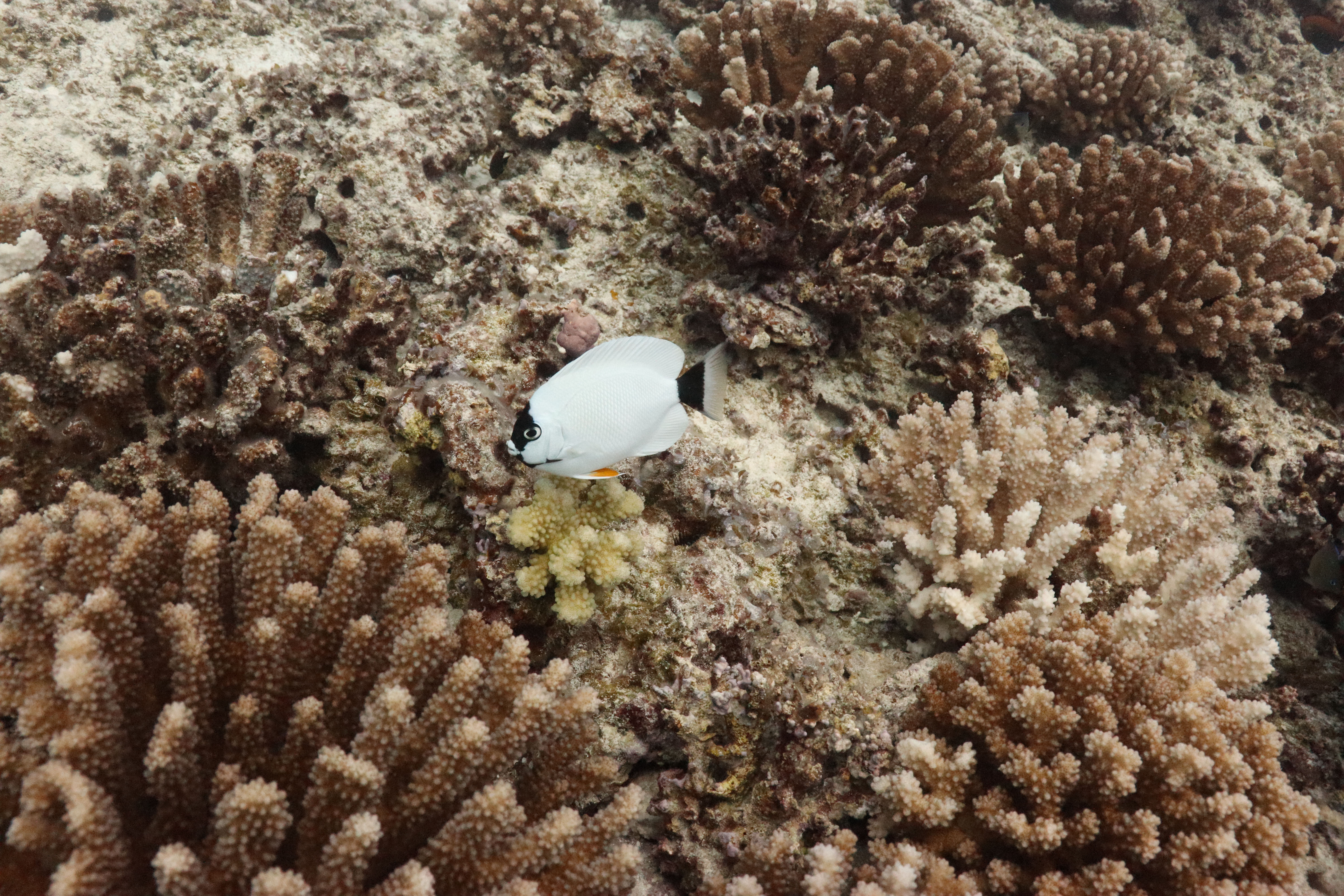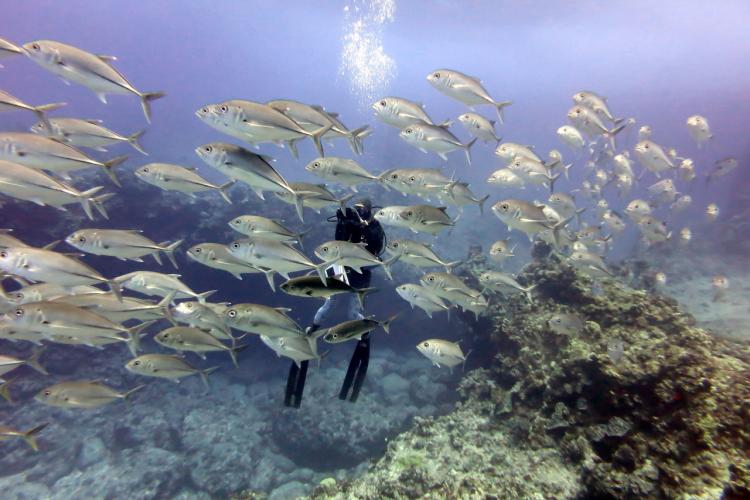Survey Goals
The Pacific NCRMP monitors coral reefs across about 40 islands and atolls. Its fish surveys aim to give periodic snapshots of coral reef communities at U.S.-affiliated Pacific islands. The surveys collect data on a large scale, focusing on entire islands and atolls rather than specific sites. This “wide-but-thin” approach provides broad insights into the health of shallow coral reefs (0–30 m deep) to support conservation and management. We use a weighted average approach to analyze fish communities at several scales, dependent on reef structure, human population density, and more. More info on protocols and data access here.
How do we survey
The stationary point count (SPC) method involves two divers counting fish at the same time in two side-by-side, 15-meter-wide circular areas that extend from the ocean floor to as far as they can see vertically. The survey has two parts, the first is species identification (5 minutes) when each diver records all the different types of fish they see within their area. After the first 5 minutes, they start counting and measuring. Divers go through their list and count how many of each species they see, estimating their length in centimeters. They do this by scanning their area multiple times, focusing on one species group per scan. More details about our survey protocol can be found on the NCRMP Data Viz Tool as well as under ‘Methods’. In previous years, the Pacific RAMP and NCRMP have also conducted belt transects and towed-diver surveys to assess fish assemblages.
What do we measure
Divers collect fish species, count and length data, which can then be used to calculate biomass, fish density, and occurrence per species. We also analyze the data by looking at individual fish species, across consumer groups (primary, secondary, planktivore, etc.), and all fishes combined. We analyze this data using weighted averages at the sector, subjurisdiction, and jurisdictional scale. More details available in the NCRMP Fish Protocol - Pacific.
Why do we survey
As part of NCRMP’s goals, we collect reef fish data the same way across all U.S. and U.S.-affiliated areas in the Western and Central Pacific. This includes places with different natural conditions and levels of human activity. The data we collect helps us:
- Track the health and changes in reef fish communities over time.
- Support efforts to manage coral reef fish populations.
- Give federal and local managers a big-picture view to complement smaller local surveys.
- Provide a reliable, large-scale dataset that scientists can use for research.
Access Data
Under Products you can visualize and access our data using the NCRMP Visualization tool. You can go to Methods to see access for specific datasets. For raw data, our data is organized in NCEI collections. Browse datasets in the NCRMP metadata catalog for each distinct region; legacy datasets are described in the Ecosystem Monitoring and Assessment subfolder.
Contact
- Principal Investigator: Andrew Shantz (andrew.shantz@noaa.gov)
- Data Services Team: nmfs.pic.credinfo@noaa.gov


